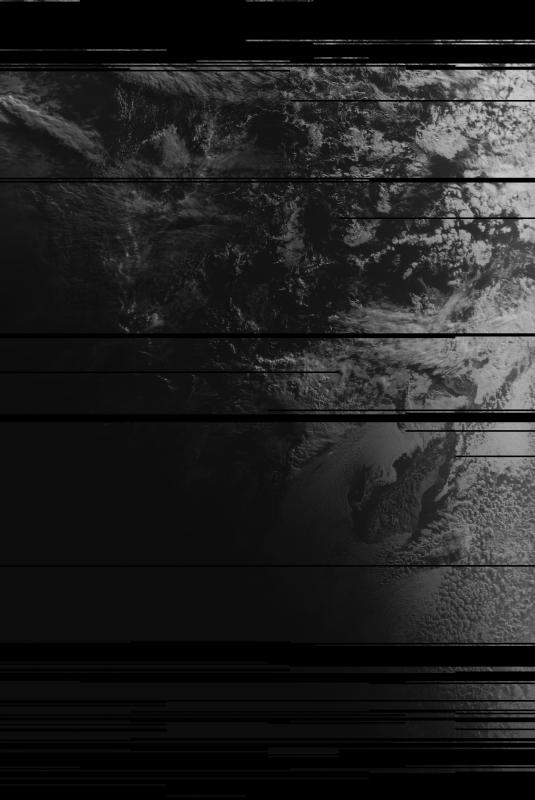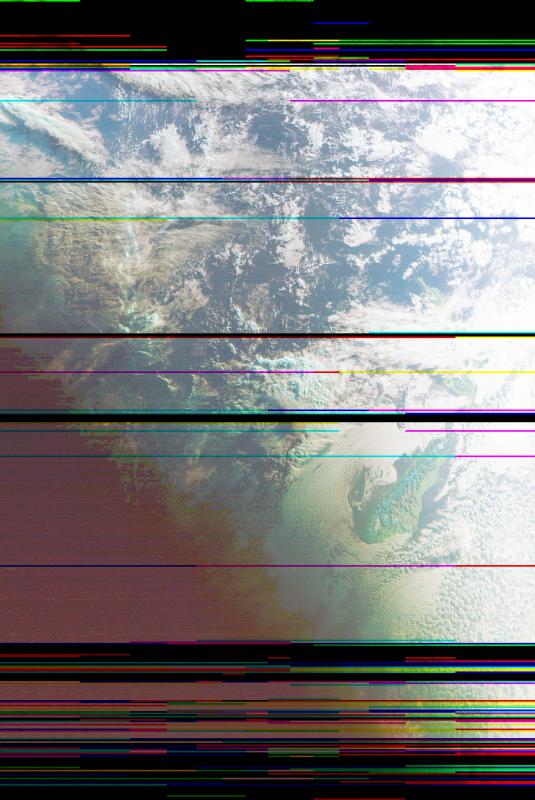Understanding Meteor M-2 Images
There is quite a lot to a Meteor M-2 image which isn’t immediately obvious from looking at one of the images.

This is the visible light image from one of the passes this morning taken as dawn was breaking, with is still dark in the bottom left of the image and light in the top right. This is due to the earth having its axis of rotation tilted about about 23.5° relative to its orbital plane for rotation around the sun.
The create this image, the satellite captures three different images at frequencies in the red, green and blue part of the spectrum, which are combined to make the colour image.

This is one of the three different images which is showing the green data. Note that the pixels are a grey scale which show the intensity of green light at each point, they are not green.
With the image being captured around dawn, a lot of the image is pretty dark, so to help make it easier to see features, it is processed with a histogram equalisation process.

Now it is easier to spot features on the image and the South Island of New Zealand can be seen in the centre, right part of the image.
The other obvious features are lines across the image, which are where there was a problem receiving data from the satellite which impacted one or more of the channels, with the colour seen showing which channel(s) didn’t get processed correctly.
- Black – no data from any channel
- Red – no data from green and blue
- Green – no data from red and blue
- Blue – no data from red and green
- Cyan – no data from red
- Magenta – no data from green
- Yellow – no data from blue
The thick like in the lower third of the image is from a bug on the satellite.
There is a lot of noise on the northern part of the image which corresponds to higher ground to the north of the receiving location, plus a lot of radio frequency noise sources (otherwise known as Auckland). And the noise to the south is from hills to the south.